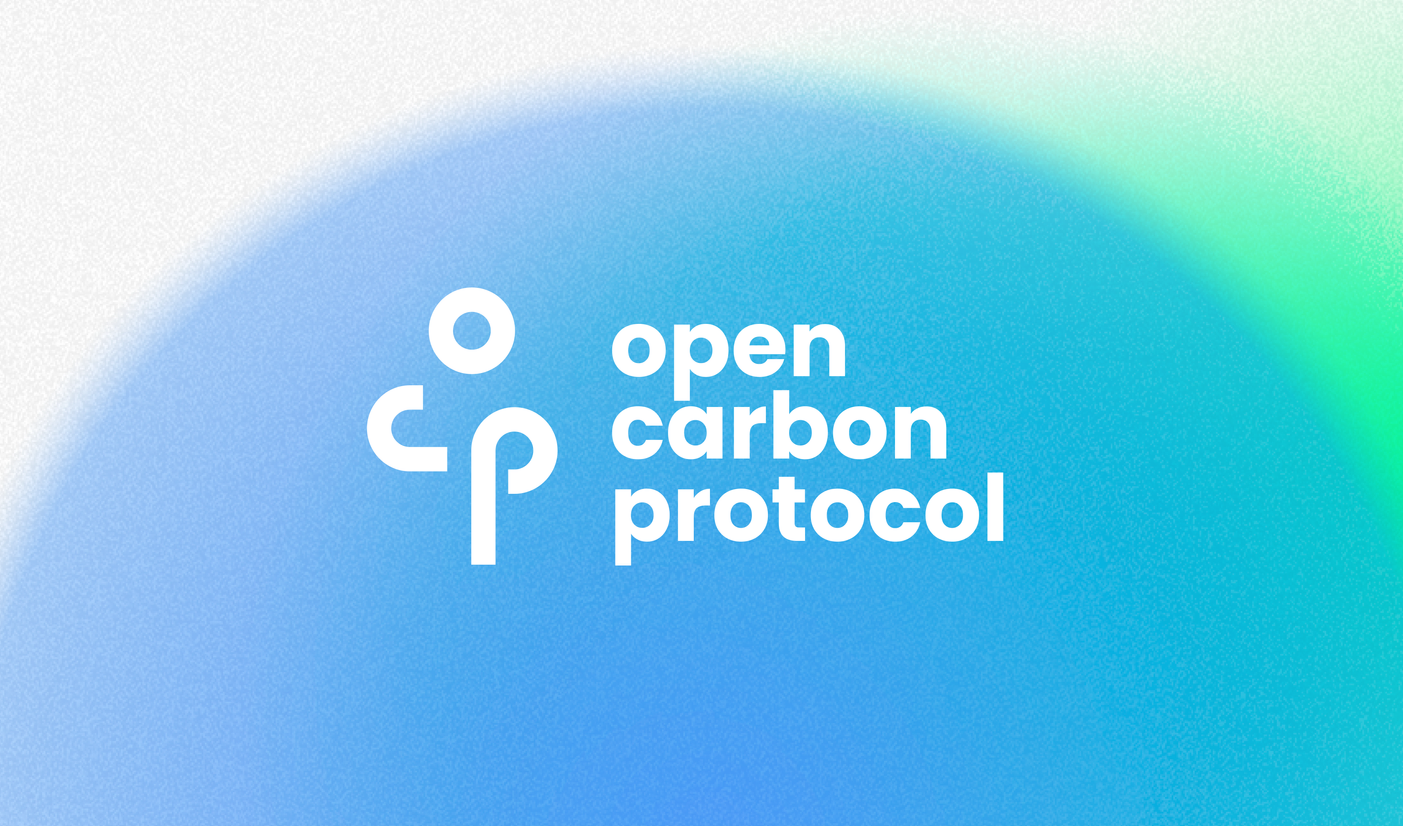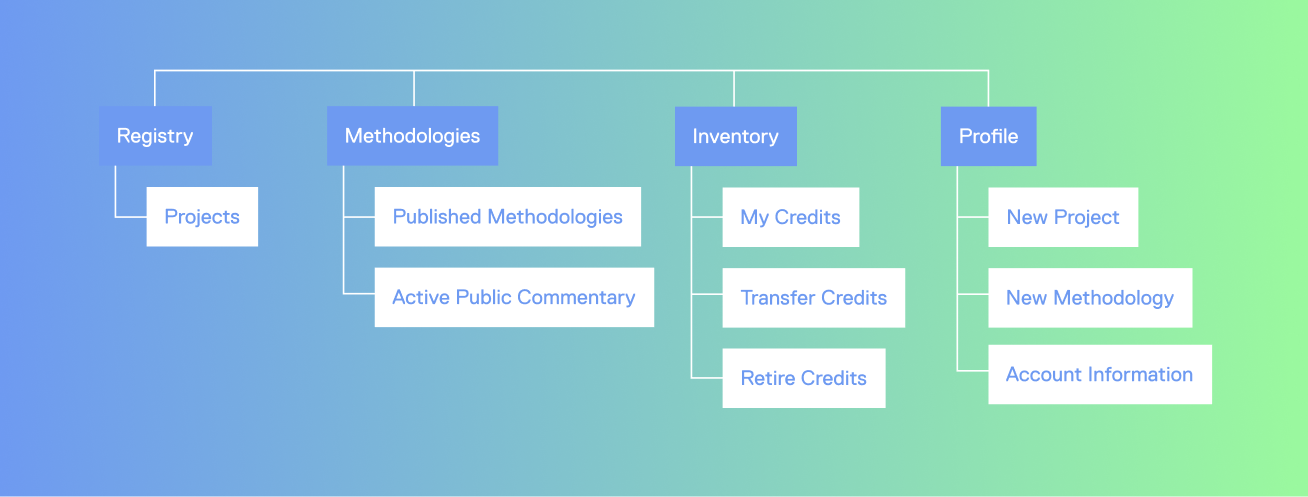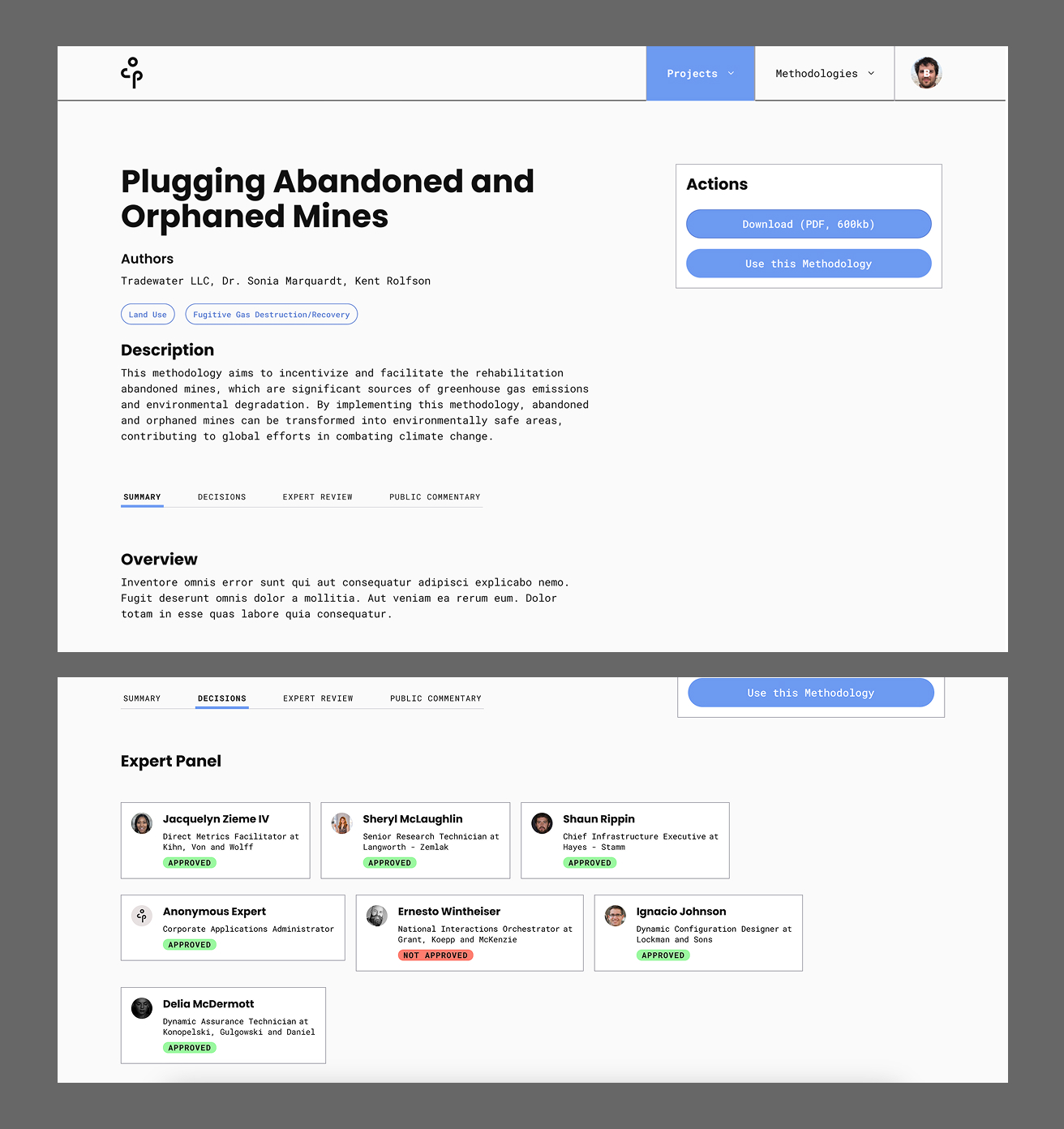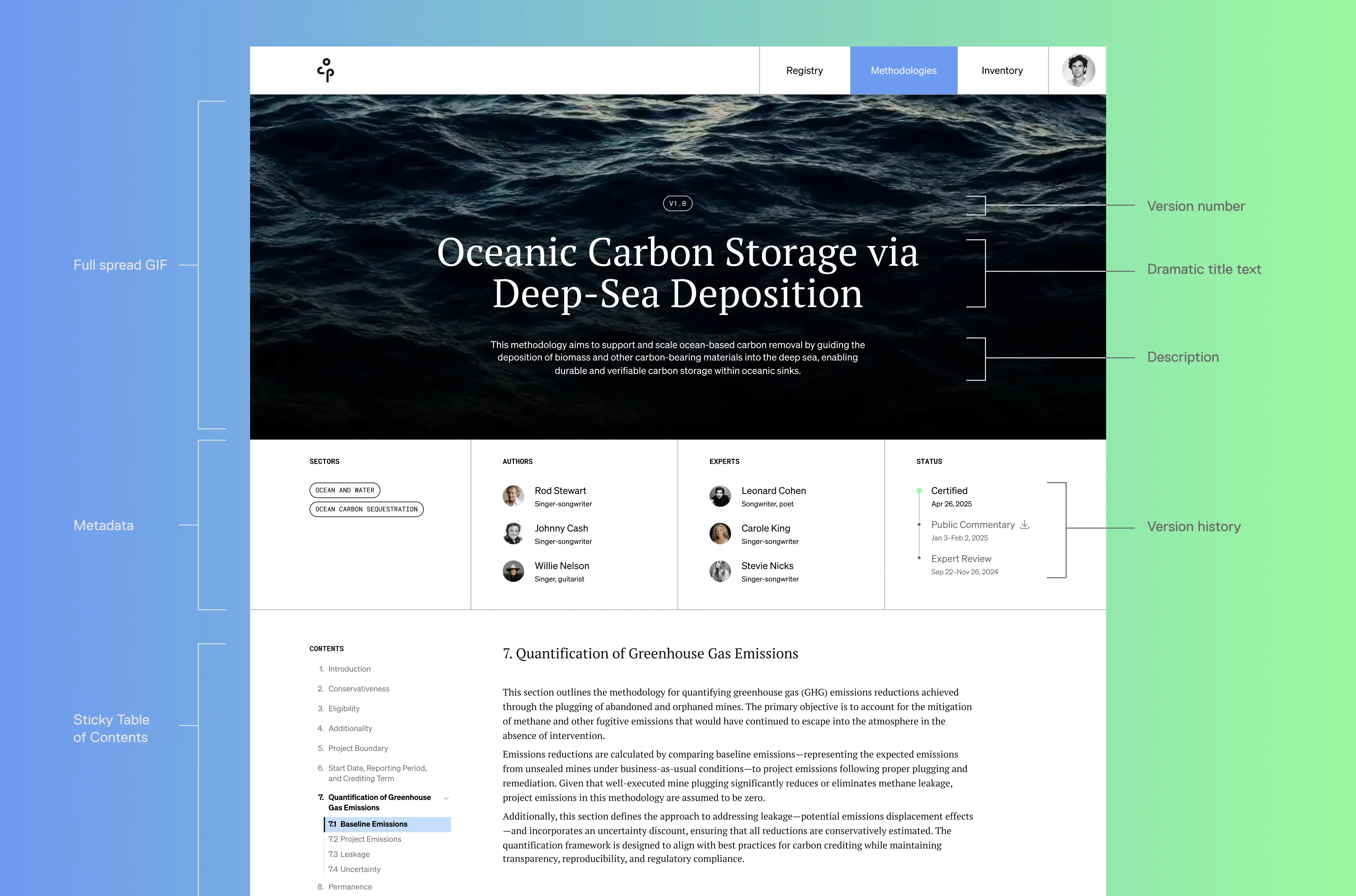Open Carbon Protocol
Overview
My co-designer and I collaborated with the Chief Product Officer and the Head of Product Design at oneshot.earth to redesign the Open Carbon Protocol’s public registry.
This case study details my work on the information architecture, navigation system, and interface design to clarify their complex climate-related processes for a wider audience.
Role
- Product Designer
- Project Manager
Client
oneshot.earth
Team
- Hansi Zhu (me!)
- Jenna Shon, Designer
Timeline
Spring 2025 (5 weeks)










